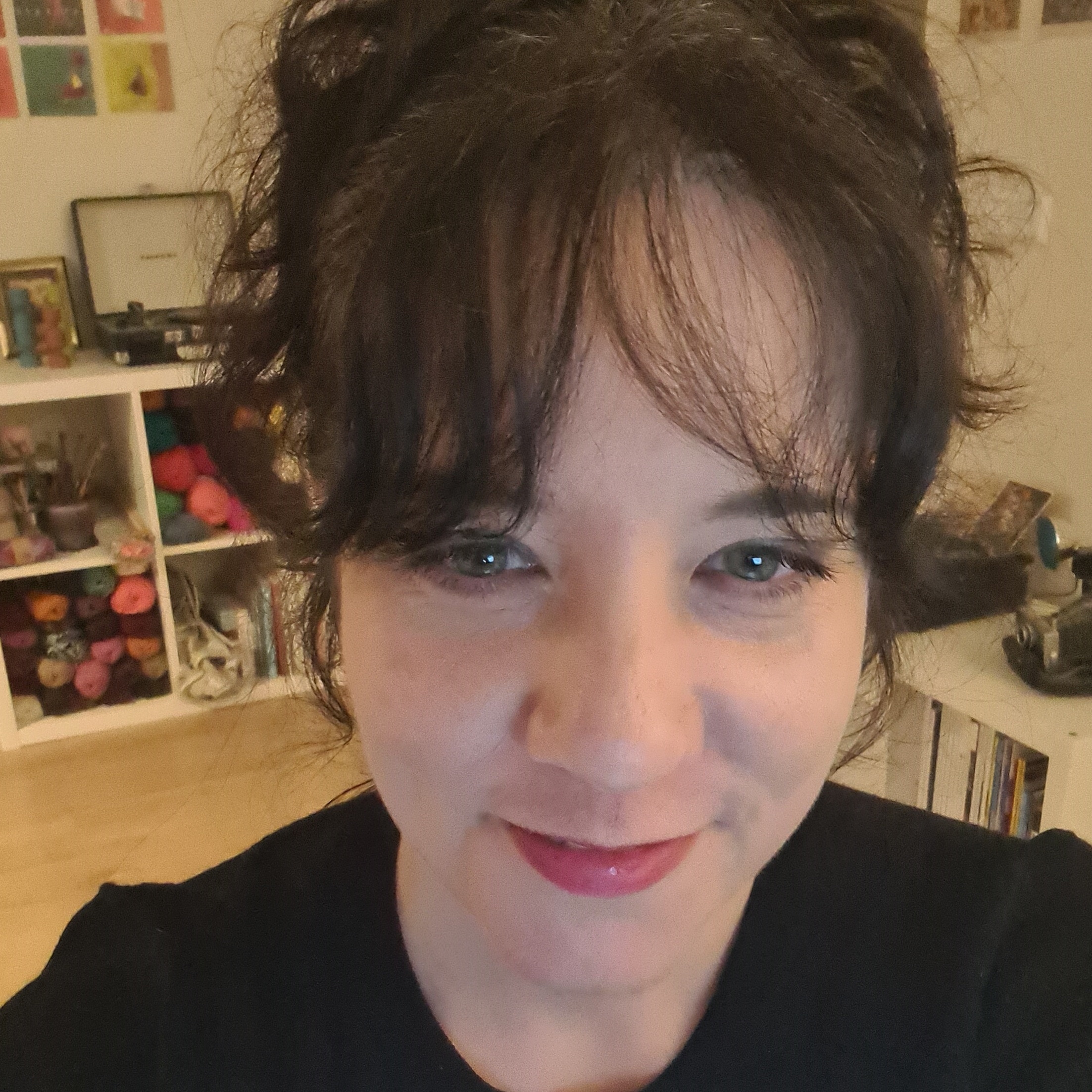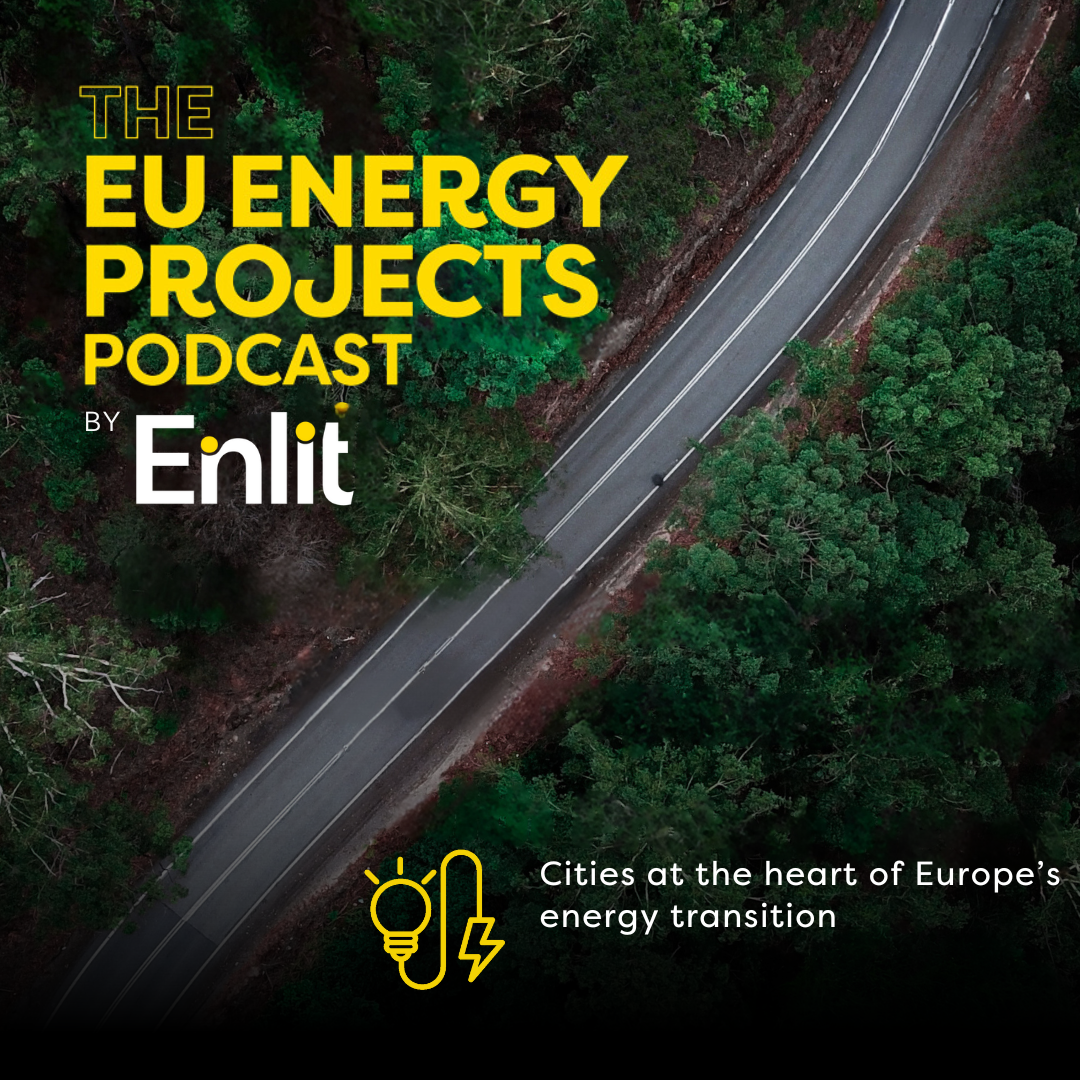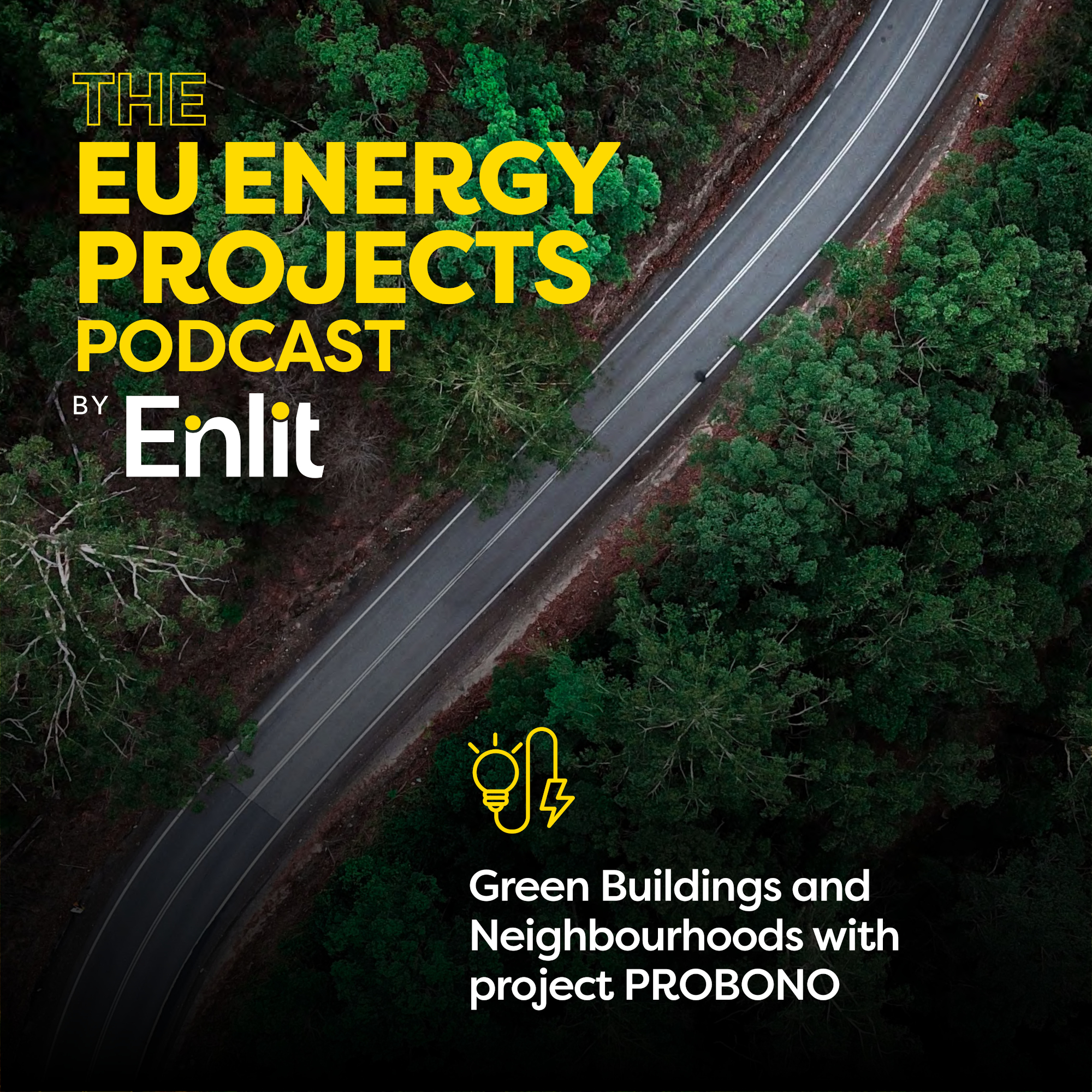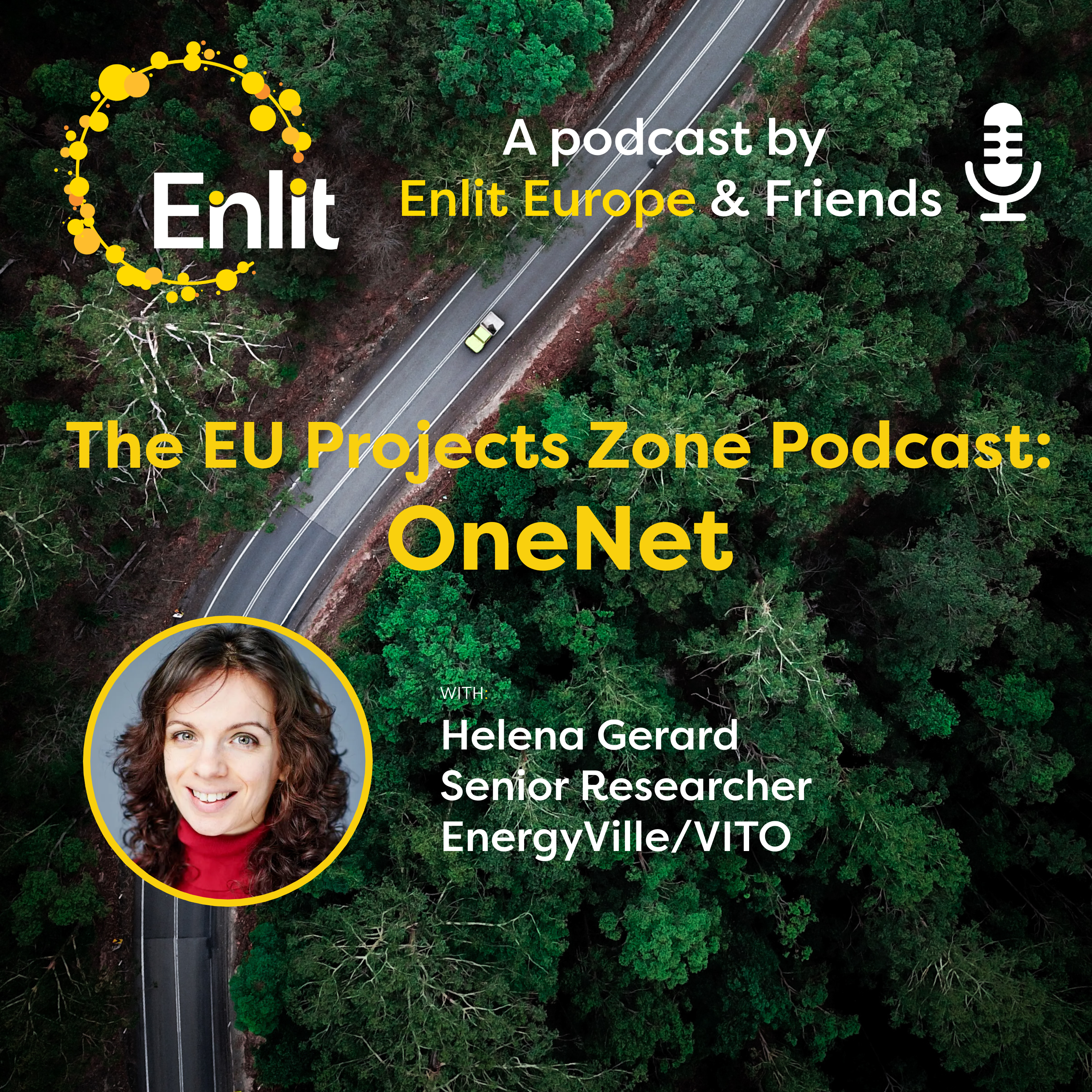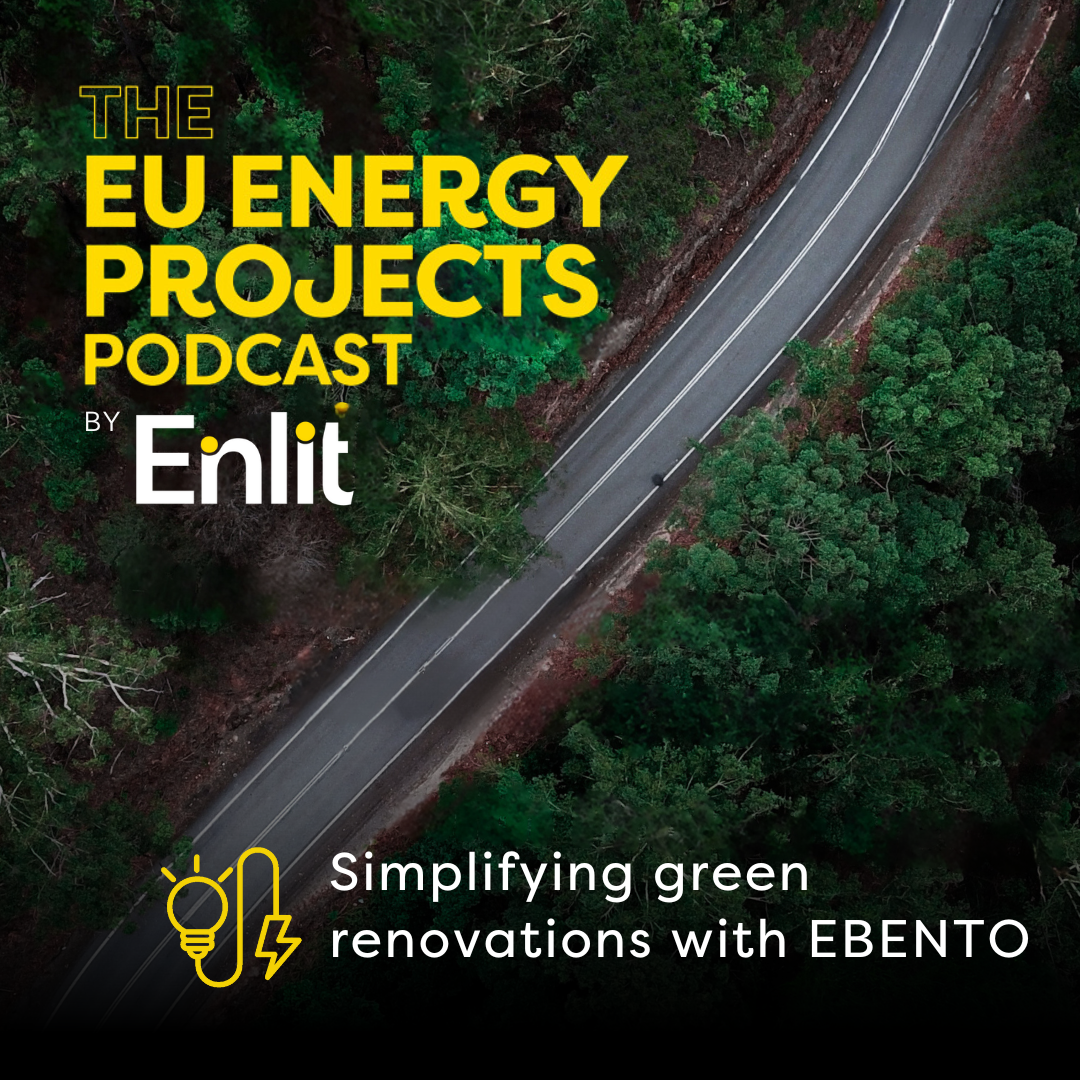Episode Transcript
[00:00:10] Speaker A: Welcome to the EU Energy Projects Podcast, a podcast series from Enlida and France focusing on the clean energy transition for the European Union and the EU Commission funded energy projects that will help us achieve it. My name is Aretid Daradimu. I. I am the editor of the EU Energy Projects Podcast and your host.
[00:00:34] Speaker B: In this episode we turn our attention to cities, the engines of growth, but also major contributors to climate change, responsible for about 70% of global energy related greenhouse gas emissions.
We're joined by Franz Firstbeck, project advisor for the EU funded Atelier project.
Atelier is pioneering the concept of positive energy districts in eight European cities, with Amsterdam and Bilbao leading the way.
We'll explore how EU and local regulations support or sometimes challenge the transformation and how cities can become true frontrunners in Europe's carbon neutral future.
Franz, thank you so much for being here with me today. And could you start by introducing Atelier and its vision for positive energy districts?
[00:01:31] Speaker C: Yes, thank you for inviting me. Atelier is one of the Horizon Europe's smart cities and communities projects. We started in November 2019 and we running still till April 2026, slightly longer than expected, but we were hampered amongst others by the COVID period, but also by other external conditions that changed over the past years.
We have a budget of roughly 20 million euros and we work with 30 partners involved in all the mentioned cities. We have governmental partners, we have research entities and we have private companies such as the two private real estate developers in Amsterdam, quite important software developers. And in Spain, certainly worthwhile to mention. Iberdrola, a famous big company in Spain, but also Tellur, the latter is a is a fast growing company in Spain. It's involved in district heating and cooling networks. Quite important for our pilot in Spain.
This range of projects of Horizon Europe focus explicitly on positive energy districts to explore if and how a group of buildings so beyond an individual building itself can be energy positive via generating more energy than consumed and thereby being able to potentially share that energy with their neighboring areas.
And I think, and we will touch upon that later, we are succeeding. We don't have the results yet in quantifying data because we're still monitoring, but I think we grasp a lot of important lessons.
[00:03:08] Speaker B: Why would you say cities are such a critical focus for the energy transition and what makes them both a challenge and an opportunity?
[00:03:19] Speaker C: I think what you already said in your intro, cities are crucial for the energy transition because they can be seen as concentrated centers of high energy consumption and they are responsible for the largest percentage of global energy use and greenhouse gases.
They have a dense population, the infrastructure and the economic activity. They make them a powerful stakeholder, but at the same time also problematic because it's a whole mix of different stakeholders and especially the involvement and the engagement of citizens is the most crucial and most problematic element in working inside cities.
[00:04:01] Speaker B: And.
[00:04:01] Speaker C: And you need the citizens to get sufficient support.
But certainly local government have strong influence through planning, building regulations, procurement, and they can drive the energy transition. So cities are crucial, but they also have sincere challenges.
[00:04:19] Speaker B: Speaking of cities, France now Amsterdam and Bilbao, if I understood correctly, are the lighthouse cities in atelier.
What makes them strong test beds for innovation?
[00:04:31] Speaker C: Yes, they were selected at lighthouses, so they try to give examples for other cities what can be tested, what can be tried and what is applicable.
In Bilbao, it's very interesting because there the pilot is part of a much greater setting is the transformation of the Zorozawa island. What really is a flagship for the entire city. And it's ongoing already for 10 years and it will go on for more than 10 years. So it's very big and there we are a small element in it. And in Amsterdam, what's very interesting to mention and also quite important to understand also later, the lessons learned, the pilot we have in Amsterdam, it's running under a sandbox, so we have an exemption rule. Thereby we can test something what otherwise would never be possible.
Elsewhere we are allowed that consumers and assets that we have a battery, the PV, the geothermal is all behind 1 meter and is operating as one entity towards the DSO.
And normally that's not allowed and that requires a change to the regulations, but time. I think it's also fair to mention that every pilot also has its limitations.
Both Amsterdam and Bilbaoz they selected brownfield developments and the brownfield development is totally different than retrofitting existing houses.
So we only can draft parts lessons out of our projects that cannot be replicated to other areas.
[00:06:09] Speaker B: Hello everyone, Areti here. I would like to personally invite you to discover the EU Project Zone at ENLIT Europe 2025 in Bilbao.
Our event takes place from the 18th to the 20th of November. Come say hi to me at the EU Project Zone.
How do EU frameworks like the Green Deal and fit for 55 shape what Atelier can achieve on the ground?
[00:06:37] Speaker C: Let's say, I think certainly GreenDeal fit, 455 etc. They really offer a proper framework for those kind of projects and pilots because they set a high ambition. The CO2 goals that they have. It's now under discussion, but that is quite important. But also in those frameworks, a lot of different EU directives giving leeway to what is allowed. But I think at the same time, and we would most likely touch upon that later, it's important to stipulate that the actual implementation is defined by how these EU directives are accepted and translated into national legislation and how active, ambitious local governments want to be. So it's good to have a framework, but that doesn't mean that something will happen.
It depends mostly on what happens at national level and local level.
[00:07:26] Speaker B: What about the local rules and regulations, the role that they play? Are they enablers or obstacles?
[00:07:34] Speaker C: If you say local regulation that you take the national level, then certainly they are in most cases what I see in atelier, not really an enabler. They purely give some kind of allowance what is allowed. But at some cases still they are more hampering the real incentives. The real enablers are really the local level, the city level. So they are enabling by taking bold steps. Okay, we want to do this or we don't want to do that. There they are, the stronger ones.
[00:08:07] Speaker B: Couple of examples.
[00:08:08] Speaker C: Or in Amsterdam, one of the pilots is specifically designed by the city itself. They took a bold step by completely designing the specs of the entire project and then tendering out to a consortium in a bidding process to a developer and an architect for doing the entire building and construction. So that means the city took the initiative to put the bar quite high for sustainability. It's not a private developer, but the city said that we want to have high involvement of recycling materials, we want to high involvement of wooden materials, et cetera.
But it's quite important.
This is doable in Amsterdam and in several cities in the Netherlands, because the city owns the ground, so they control everything. In many other countries the local government doesn't control the ground, so they don't have the power to put that in place.
And an example in Bilbao, where city level governments pushed the initiative is that in Bilbao, partly those are private initiatives at Sorazawa Island.
But most important element in our pilot is the so called district heating and cooling infrastructure network. And that's full finance by the city.
And without that network, without that infrastructure, the whole project would not have a big impact. So that is the decision of the city to make a sustainable island and to put investments in it.
[00:09:46] Speaker B: Now atelier is also about replication. So what is happening in Amsterdam and in Bilbao will be replicated to the extent that this is possible to fellow cities like Bratislava, Budapest, Copenhagen, Krakow, Matosinhos, if I pronounce it correctly, and Riga. Now how Are these cities preparing to adapt? What's being tested in Amsterdam and Bilbao now?
[00:10:11] Speaker C: This is I think also key element in our project.
All these fellow cities are heavily involved via different kind of meetings, physical meetings, webinars.
What are the lessons learned that we gain in Amsterdam and Bilbao?
And then we launch joint activities, developing city plans, but especially also defining, selecting, designing areas of PEDs in those cities. That is the first step for the next pivot.
It's not an actual requirement in the project, but in several cities already the actual implementation is taking place partly by involving parallel. Later start a new project, especially Riga. That's a great example. After Atelier, they launch three additional projects, building upon atelier and step by step continuing.
And the last element I think why we are proud of is that during the Atelier project, the EU also launched their mission on 100 climate neutral cities. And six out of eight cities in Atelier are applying for that label.
So Atelier was a stepping stone for going one step further. And without having evidence, I would claim that without Atelier, I think certainly half of those cities would never have applied for the label.
[00:11:34] Speaker B: Thing to hear also because this is in a way the dream of every project to continue in some shape and form after its funding period, after its official period is over. But were there any policy or regulatory differences between these cities that impacted how easily solutions could be replicated?
[00:11:59] Speaker C: Yeah, and that's a lesson I would give to every project. When you work with more cities in different countries, you never can copy one solution from one city to the other, especially if it's in a different political and cultural setting. So therefore we didn't press so much about what are the solutions, but what is the process behind the solution to understand how you come to a solution.
And there we try to guide and train the different cities to follow a certain systematic approach.
And we try to adapt also that systematic approach to cultural settings that even some kind of tools you cannot transpose easily from a Western European city to an Eastern European city. But especially building capacity. And the process is essential to avoid all those policy and regulatory differences, because you cannot cope with those in five years time.
[00:13:01] Speaker B: Absolutely. But it's not only that, even if we talk about pure knowledge, what is happening to ensure this knowledge transfer across cities with different political, legal, energy contexts. How do you do that? What was, let's say, the trick accomplish.
[00:13:18] Speaker C: That what we tried. And there I. I often quote an assistant project of us, a project that was led in Norway, what's called City Exchange. They say pets, it's not a product It's a process and it's a sort of a. And they made a sort of a cookbook. And then it's not meant that you try to copy the recipe, but to understand how to combine different elements to get at, at the end the recipe that you want to have. So what we started with, in each individual city involved, what are your stakeholders? What is the understanding of the problem? And to create a level playing field that they have a correct understanding that they can talk with each other and bring them together in a systematic way and then given the tools and try to adapt the tools, if necessary, to the cultural setting, how to talk with each other, how to engage with each other. We have a method, what we call engagement of stakeholders via innovation ateliers. Bring them together, form a key group and do that step by step, every month of every second month and in every city.
We guide them and we mentor them.
[00:14:37] Speaker B: Now the project also mentioned some very ambitious goals, from generating surplus primary energy to preventing CO2 and also nitrogen.
Sorry, let me. Nitrogen oxide emissions, right. If I'm not mistaken, how are you tracking and measuring these impacts already?
[00:15:02] Speaker C: One limitation, we didn't focus so much since the start on the NOx emissions because the NOX emissions are more related to mobility and E mobility was for different reasons moved out of the project.
So we mainly focus on trying to calculate the CO2 emissions. What we do, we measure the energy performance, actual energy performance. We are doing that now for the last eight months and we still continue that in next year. And then we calculate with that energy performance, with the type of energy you're using, how much CO2 is then either reduced or emitted.
And that's very special. And it's relatively unique in RTA project compared to all other system projects. In one of the pilots in Amsterdam, we even conducted a so called life cycle analysis where we exactly calculated not only what is the energy performance during the occupancy of the building, but also what is the embedded CO2 from the building materials itself, even to the recycling at the lifespan, to show that for that building that is mainly done with wood and with recycled materials, it has a much lower CO2 impact.
[00:16:22] Speaker B: Another very important aspect of the project is the funding itself. So 156 million euros, it's not something that you hear often, especially for Energy horizon projects or etc. Now this is a big commitment. How are EU and local authorities sharing responsibilities in both funding and governance?
[00:16:46] Speaker C: Two numbers.
One is the number that I mentioned before that the project, and that's mainly human resources. The 20 million that's EU money.
In that 20 million, only 1.5 million is really for equipment. So that's really innovative technical equipment that is in the project.
The other number you mentioned in your question, the 150 million, 156 million. That's purely the investment for all the buildings and the infrastructure around it.
In Amsterdam, the money is purely financed by private developers.
They sourced out money via banks and co finances how to raise the money and then later get the money back via selling out apartments or renting out the hotel, etc. In Bilbao, partly similar also there part of the large investment, it's done by private, the private market only. The geothermal system is purely Bilbao money. So that is government money.
[00:17:50] Speaker B: Okay, that makes sense.
I was also wondering, I mean, we touched a little bit upon it earlier, but I was wondering, how do you see atelier contributing to the larger European mission of climate neutrality by 2050?
[00:18:05] Speaker C: I think what we can see in atelier is that for the different solutions that are applied in Amsterdam and in Bilbao, that there is a business case. In Amsterdam we have a mixed assets. Pv, geothermal, a large battery, what we all glue together and then via a very smart system, optimize it. And if you do that correctly, what is not easy, you get a positive business case. So it's doable and similar. Also in Bilbao, with the fifth generation district heating network also there, there is a good positive business case available. So that can show if you want to have an ambitious energy transition, there are solutions available all around Europe only, as we said before, it's not that you should 100% copy paste to say, okay, we take the similar approach as Bilbao did and we do it in Budapest and there also we will have results. Then you have to adapt it. You have to potentially seek about the governance structure, what kind of regulations are not allowed to adapt it. So it's not always that if one solution was successful in one place, it's successful in all places. But certainly it shows successful solutions beyond the atelier network.
[00:19:32] Speaker B: What lessons can other European cities learn from the project?
[00:19:37] Speaker C: I would say, and that is a discussion I often have in different conferences where a lot is discussed about technology, but also about financing.
I feel that the major factor that is hampering energy transition is not the technology.
It's also not the money. The money is there only the governance, how to do everything and how to bring people correctly together.
That is much more complicated. So it's more the soft aspects. Why we learned a lot also in Atelier, where people can learn from, instead of thinking okay, is PV the right technical solution there? Step by step, we know the best details already. And of course there is innovation ongoing, but as exactly the whole legal situation around it and the governance structure around it's much more complicated.
[00:20:32] Speaker B: Franz, as we approach the end of our discussion, I would like to finish with a message from you to both EU and local authorities. So if you could send one message to both EU policymakers and one to local city leaders about enabling positive energy districts, what would that be?
[00:20:51] Speaker C: I would say, and that's related to how we started when we said atelier. It's a project with eight cities all over Europe.
I would recommend, and I already did in different conferences, both to the eu, but also to cities.
Perhaps not define a project with eight cities, but make it smaller and then you can go much deeper into the content instead of having eight totally different cities and then superficially touch the ground.
So it's better to have less cities and then work more closely with satellite cities, closely around those kind of cities that you build local regional elements in the project, so that Amsterdam would have worked more closely with the neighboring cities. Instead that we work with both in Riga and we do something in Budapest and we do something in Matosinhos. I understand that EU want to spread the message, but each time having a project with eight cities, and then quite often always the same cities, big cities like in atelier, all the capitals that doesn't spread the message to smaller cities in every country. The closer national networks are really essential, and that sometimes is lacking.
[00:22:14] Speaker B: You mean it could be, let's say nationwide to begin like this, and then the various countries collaborate. Yeah, that makes total sense. Franz, thank you so much for this conversation. It was an eye opener.
[00:22:25] Speaker C: Thank you very much.
[00:22:28] Speaker A: You've been listening to the EU Energy Projects podcast, a podcast brought to you by Enlit. And Franz, you can find us on Spotify, Apple and the Enlit World website.
Just hit subscribe and you can access our other episodes too. I'm Aretita Radimo. Thank you for joining us.
[00:22:47] Speaker C: Sam.
